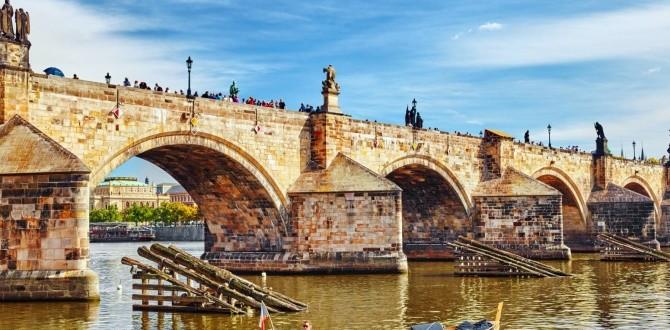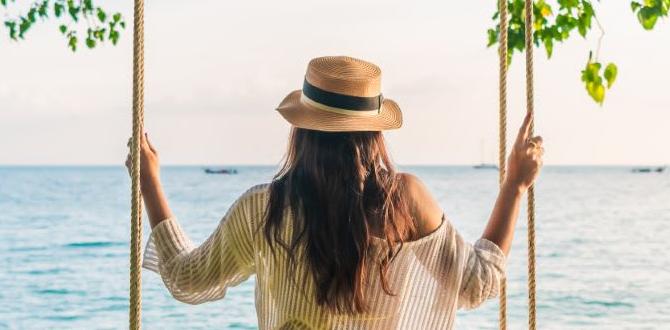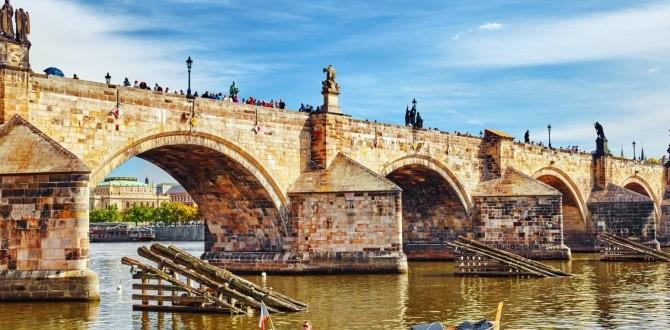Accra, Ghana presents a vibrant tapestry of culture and commerce, and exploring it on foot is a rewarding experience. This essential guide provides beginner-friendly walkable routes and maps to help you navigate the city safely and enjoyably, ensuring a stress-free urban adventure.
Accra pulsates with life, a city that invites you to step out and discover its hidden gems. But for first-time visitors or those who prefer to explore at their own pace, figuring out where to walk and how to get around can seem a little daunting.
The sheer energy of the city, combined with its unique layout, can leave you wondering where to begin. Don’t worry; it’s completely understandable! This guide is here to demystify Accra’s streets, offering simple, practical advice and curated routes that prioritize your comfort and safety. We’ll break down how to find your way and what to expect, so you can confidently set off on your urban explorations.
Discovering Accra on Foot: Why It’s Worth It
Walking in Accra offers an unparalleled connection to the city’s soul. It’s where you’ll find the most authentic experiences, from the aroma of street food wafting from bustling markets to the rhythmic sounds of local music spilling from open doorways. Unlike relying solely on taxis or public transport, walking allows you to:
- Immerse yourself in the local culture at your own pace.
- Discover charming side streets and local businesses you might otherwise miss.
- Enjoy the vibrant street art and architecture up close.
- Stay active and healthy while traveling.
- Save money and reduce your carbon footprint.
Essential Tips for Accra Walking: Safety First!
Before you lace up your shoes, it’s crucial to be prepared. Accra is a dynamic city, and a little foresight goes a long way in ensuring a pleasant walking experience. Think of this as packing your essentials—just for your feet and your awareness!
Stay Hydrated and Protected
The Ghanaian sun can be intense. Always carry a reusable water bottle and sip regularly. Sunscreen, a hat, and sunglasses are non-negotiable for prolonged periods outdoors. Staying hydrated is key to preventing fatigue and heat-related discomfort. Remember, just as you’d pack extra diapers for a child on a long trip for peace of mind, staying hydrated is your body’s essential provision for travel adventure.
Comfortable Footwear is Key
This might seem obvious, but it bears repeating! You’ll be doing a lot of walking, so opt for sturdy, comfortable shoes with good support. Avoid brand-new shoes that might cause blisters. Comfortable shoes mean you can explore longer and enjoy every step without distraction.
Be Aware of Your Surroundings
Like any busy city, it’s important to be mindful of your belongings and surroundings. Keep valuables secure and out of sight. Walk with confidence and be aware of traffic, especially when crossing streets. Observing local pedestrian etiquette is also helpful; often, it’s a matter of making eye contact and signaling intent.
Navigating the Streets
While Accra doesn’t have a strictly grid-like street system everywhere, major roads are often well-defined. Look out for landmarks (statues, distinctive buildings, large shops). Don’t hesitate to ask locals for directions; most people are friendly and happy to help. A simple phrase like “Excuse me, please, where is…?” can go a long way.
Best Times to Walk
Mornings and late afternoons/early evenings are generally the most pleasant times for walking, as the heat is less intense. Midday can be very hot, so it might be better for indoor activities or a break.
Accra Walkable Routes: Curated for Beginners
These routes are designed to give you a taste of Accra’s highlights without being overwhelming. They focus on areas with relatively good pedestrian infrastructure and points of interest you can easily access on foot.
Route 1: Jamestown – History and Art Immersion
Jamestown is one of Accra’s oldest neighborhoods, a vibrant fishing community rich in history and bursting with creative energy. It’s a fantastic place to walk and soak in the atmosphere.
What to Expect:
- Historic lighthouse offering panoramic views (check for accessibility).
- Busy fishing harbor with colorful boats.
- Street art and murals adorning buildings.
- Local markets and food stalls.
- The Jamestown Cafe and other art spaces.
Approximate Walking Time:
2-3 hours (at a relaxed pace with stops)
Starting Point:
The Jamestown Lighthouse.
Directions:
- Begin at the Jamestown Lighthouse. Take in the views and the bustling activity of the harbor.
- Wander towards the fishing harbor. Observe the fishermen at work and the daily catch.
- Explore the winding streets of Jamestown. Keep an eye out for striking street art. Many buildings are canvases for local and international artists.
- Visit the Jamestown Community Centre or look for local galleries to appreciate more art and perhaps interact with artists.
- Stop for a refreshing drink or a local snack at one of the small eateries.
- Make your way to Fort James (check if site is accessible) for a glimpse into colonial history.
Pro Tip: Many of the murals can be found around Oxford Street and the areas near the Jamestown Post Office. Consider using a navigation app like Google Maps with offline downloaded maps to help you orient yourself, especially in the smaller lanes.
Route 2: Osu Oxford Street & Surroundings – Shopping and Dining Hub
Osu Oxford Street is Accra’s premier shopping and entertainment district. While it can get busy, walking along this iconic street and its side avenues is a must-do.
What to Expect:
- Numerous shops, boutiques, and malls.
- A wide array of restaurants, cafes, and bars.
- Street vendors selling crafts and clothing.
- Nightlife (if exploring in the evening).
- The Osu Castle (view from outside, as it’s a presidential residence).
Approximate Walking Time:
2-4 hours (depending on shopping and dining)
Starting Point:
The intersection of Oxford Street and Ako Adjei interchange.
Directions:
- Start at the Ako Adjei interchange end of Oxford Street.
- Walk down Oxford Street, browsing the shops on either side.
- Explore the smaller streets branching off Oxford Street, which often host hidden gems – more boutiques, art shops, and eateries.
- Consider a detour to the Labadi Road for more commercial activity.
- Make your way towards the area near the Osu Castle for a historical perspective (note: the castle itself isn’t open for walks inside, but its vicinity offers views and avenues).
- Stop for lunch or a coffee at one of the many established restaurants or cafes.
Note: Oxford Street can be crowded, especially on weekends. Be mindful of your pace and personal space. For travelers needing to manage incontinence, carrying adult diapers or pull-ups can offer an invaluable layer of confidence and freedom to explore without worry. Ensuring you have these essentials readily available, much like carrying bottled water, is part of smart, stress-free travel planning.
Route 3: Independence Square & Kwame Nkrumah Mausoleum – National Landmarks
This route focuses on two significant national monuments, offering a blend of history, reflection, and the grandeur of Ghana’s past.
What to Expect:
- The vast Independence Square (Black Star Square).
- The Kwame Nkrumah Mausoleum and Memorial Park.
- Government and administrative buildings.
- Open spaces for reflection.
Approximate Walking Time:
2-3 hours (including time spent at the Mausoleum)
Starting Point:
Independence Square.
Directions:
- Begin at Independence Square. Take your time to walk around the expansive grounds and admire the Independence Arch.
- From Independence Square, head towards the Kwame Nkrumah Mausoleum. This is a relatively direct walk along Independence Avenue.
- Spend time exploring the Kwame Nkrumah Mausoleum and Memorial Park. Learn about Ghana’s first president and the country’s independence.
- After visiting the Mausoleum, you can choose to walk back or explore the surrounding administrative areas, observing more of the city’s monumental architecture.
External Link: For more historical context on Kwame Nkrumah and Ghana’s independence, refer to resources from the Government of Ghana Official Gazette or reputable historical archives.
Mapping Your Accra Adventures
While Accra doesn’t have a unified city-wide mapping system as might be found in some Western cities, several tools and strategies can help you map your routes.
Digital Mapping Tools
Google Maps: This is indispensable. Download offline maps of Accra before you go, so you can navigate even without a data connection. It’s excellent for identifying major roads, points of interest, and estimating distances.
Maps.me: Another offline map option that is often very detailed, including smaller paths and points of interest. It’s a great backup.
Physical Maps and Guides
You might find local tourist maps at hotels or visitor centers. While these can be useful for a general overview, they might not always be up-to-date or detailed enough for precise walking navigation. Combining a physical map for overview with a digital app for turn-by-turn guidance is often the best approach.
Local Knowledge
Don’t underestimate the power of asking for directions! Ghanaians are known for their hospitality. If you are lost, approach a shopkeeper, a taxi driver, or a friendly-looking pedestrian and politely ask for guidance. Be specific with your destination.
Understanding Accra’s Street Naming Convention
Accra’s street names can sometimes overlap or be inconsistently used. Major roads usually have official names (e.g., Oxford Street, Liberation Road), but smaller streets might have local names that are more commonly used by residents. When asking for directions, it’s often helpful to mention a well-known landmark near your destination.
Sample Walk Planner: Jamestown to Arts Centre
This is a slightly more ambitious walk, connecting two culturally rich areas. It’s best done in the morning or late afternoon.
| Stage | Route Description | Estimated Time | Points of Interest |
|---|---|---|---|
| 1 | Start at the Jamestown Lighthouse. Walk towards the main road (pyrrolo Avenue). | 15 mins | Jamestown harbor, fishing activities. |
| 2 | Head east along pyrrolo Avenue, then turn north towards High Street. | 20 mins | Colonial architecture, local businesses. |
| 3 | Continue on High Street, observing the vibrant city life. | 25 mins | Accra Metropolitan Assembly building, markets. |
| 4 | Turn right onto Kwame Nkrumah Avenue, heading towards the Arts Centre. | 15 mins | Avenues lined with shops and everyday activities. |
| 5 | Arrive at the Centre for National Culture (Arts Centre). | – | Handicrafts, souvenirs, art. |
| Total Estimated Walking Time: Approximately 1 hour 15 minutes (plus time for stops and exploration) | Total Distance: Approx. 3-4 km | – | |
Note: Always check current safety advisories for any area you plan to walk through. For families traveling with young children or adults requiring specific personal care needs, such as adult or child diapers, ensuring you have adequate supplies is vital for comfort and preventing mid-journey disruptions. Ease your travel by packing necessary items discreetly and accessibly.
Navigating Public Spaces and Accessibility
Accra is rapidly developing, and while some areas have modern sidewalks, you might encounter uneven pavements, open drains, or busy roads with limited pedestrian crossings. Be prepared to walk a bit on the road in some instances, always looking out for traffic. It requires a bit more alertness than well-structured pedestrian zones. This also applies to accessibility; if you have mobility challenges, stick to well-maintained main roads and consider shorter, more focused walks in areas like Osu’s more modern sections or around landmarks like the Kwame Nkrumah Mausoleum park, which generally have better pathways.
Practicalities for Extended Exploration
If you plan on longer walking tours or exploring beyond the main routes, consider these additional tips:
Backpack Essentials
A small, comfortable backpack is perfect for carrying your daily essentials:
- Water bottle
- Sunscreen, hat, sunglasses
- Hand sanitizer
- Small first-aid kit (band-aids, antiseptic wipes)
- Snacks (nuts, fruit, energy bars)
- Portable phone charger
- A small amount of local currency (GHS) for spontaneous purchases
- Any personal care items you might need, like adult diapers or child diapers, ensuring you have comfort and security throughout your journey, no matter how long you’re out exploring.
Local Etiquette and Interaction
When interacting with locals, a smile and a polite greeting go a long way. Be respectful of cultural norms. If you are taking photos of people, it’s always a good idea to ask for permission first. Engaging with vendors at markets is part of the experience, but be prepared to haggle politely for prices of non-food items.
Transportation Hubs for Walkers
Accra’s main transport hubs can be very busy but can also serve as good starting or ending points for walks. These include the Kwame Nkrumah Circle, 37 Trotro Station, and parts of the Osu high street. If you get tired, these areas are also good places to find taxis or tro-tros (minibuses) to take you back to your accommodation.
Safety Checklist for Walking in Accra
| Category | Checklist Item | Importance |
|---|---|---|
| Personal Safety | Be aware of surroundings and potential hazards (traffic, uneven ground). | Critical |
| Keep valuables secure and out of sight. | High | |
| Walk confidently and avoid looking lost or vulnerable. | High | |
| Health & Comfort | Carry sufficient water and stay hydrated. | Critical |
| Wear appropriate, comfortable footwear. | Critical | |
| Navigation | Utilize offline maps and/or a reliable GPS app. | High |
| Don’t hesitate to ask locals for directions. | Medium | |
| General Preparedness | Pack a small backpack with essentials (sunscreen, snacks, charger). | Medium |
| Incontinence Management | Carry necessary adult or child diapers/pads for peace of mind. | Essential for stressed-free outings |
Emergency Contacts
It’s always wise to have local emergency numbers readily accessible. You can usually find these on websites of Ghanaian tourism boards or government services. For general emergencies, you can often dial 112. It’s also advisable to have the contact number for your accommodation and your country’s embassy saved on your phone.
Frequently Asked Questions
What are the best areas in Accra for walking?
Jamestown (history, art), Osu Oxford Street (shopping, dining), and areas around national landmarks like Independence Square and the Kwame Nkrumah Mausoleum are great for walking. These areas offer distinct experiences and are generally manageable for pedestrians.
Is it safe to walk in Accra?
Yes, walking in Accra can be safe if you take precautions. Be aware of your surroundings, secure your belongings, stay hydrated, and stick to well-lit and populated areas, especially in the evenings. Mornings and late afternoons are ideal for exploring.
How can I navigate Accra if I don’t speak Twi or Ga?
English is the official language of Ghana, so you’ll find that most people in tourist areas and in Accra understand and speak English. Using a translation app or learning a few basic phrases in Twi or Ga can also be helpful and appreciated.
What should I wear when walking in Accra?
Lightweight, breathable clothing is best due to the tropical climate. Comfortable walking shoes, a hat or cap, sunglasses, and sunscreen are essential. Respect local customs by dressing modestly, especially when visiting religious sites or more traditional neighborhoods.







